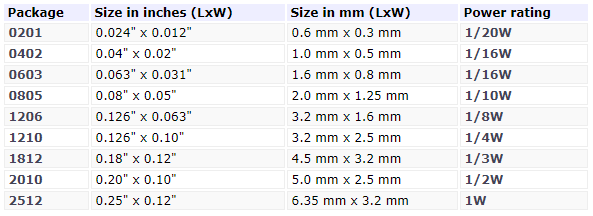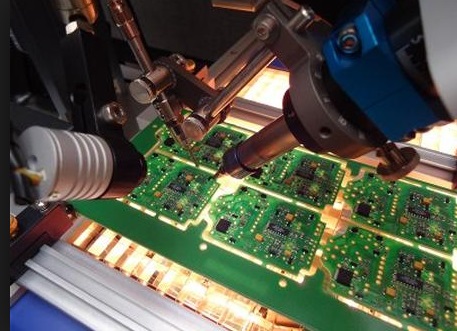Position:Home » Technical Articles
How Does SMD Resistors Work with PCBs?
Writer:Microhm Page View:Date:2019-06-18
SMD means Surface Mounted Device. An SMD is any electronic component that is made to use with Surface Mount Technology (SMT). SMT was developed to meet the ongoing desire for printed circuit board manufacture to use smaller components and be faster, more efficient, and cheaper.
SMD resistors are divided into different packages. The term package refers to the size, shape and/or lead configuration of an electronic component. For instance, an IC chip that is has leads in two rows down opposite sides of the chip is called a Dual Inline Package (DIP) chip. In SMD resistors, resistor package designators tell the length and width of the resistor.

SMDs are smaller than their traditional counterparts. They are often square, rectangular or oval in shape, with very low profiles. Instead of wire leads that go through the PCB, SMD’s have small leads or pins that are soldered to pads on the surface of the board. This eliminates the need for holes in the board, and lets both sides of the board be more fully used.

Small pads of silver or gold plate or tin-lead are placed on the board for attaching the components. Solder paste, a mixture of flux and small balls of solder, is then applied to the mounting pads by a machine similar to a computer printer. Once the PCB is prepared, SMDs are placed on it using a machine called a pick-and-place machine. The components are fed to the machine in long tubes, on rolls of tape or in trays. These machines can attach thousands of components per hour.
The board is then sent through a reflow soldering oven. In this oven, the board is slowly brought up to a temperature that will melt the solder. Once cooled, the board is cleaned to remove solder flux residue and stray solder particles. A visual inspection checks for missing or out-of-position parts and that the board is clean.
SMD resistors are divided into different packages. The term package refers to the size, shape and/or lead configuration of an electronic component. For instance, an IC chip that is has leads in two rows down opposite sides of the chip is called a Dual Inline Package (DIP) chip. In SMD resistors, resistor package designators tell the length and width of the resistor.

SMDs are smaller than their traditional counterparts. They are often square, rectangular or oval in shape, with very low profiles. Instead of wire leads that go through the PCB, SMD’s have small leads or pins that are soldered to pads on the surface of the board. This eliminates the need for holes in the board, and lets both sides of the board be more fully used.

The board is then sent through a reflow soldering oven. In this oven, the board is slowly brought up to a temperature that will melt the solder. Once cooled, the board is cleaned to remove solder flux residue and stray solder particles. A visual inspection checks for missing or out-of-position parts and that the board is clean.
Keywords:SMD Resistor
Latest News
- Resistor's role in measuring and correcting LED,,,
- Single through-hole resistors' characteristics ,,,
- Why shunt resistors for current sense applicati,,,
- Metal-film resistors with small size, high resi,,,
- 36W High-Current Shunt Resistors MMS8420,,,
- 1W Surface Mount Resistor MPR1206,,,
- An Overview of Microhm Electronics' Resistor Pr,,,
- More anti-sulfur resistors used in harsh envir,,,
- Resistance changes with temperature,,,
- 140W TO247 High Power Heatsinkable Resistor,,,
- MMS5930 is ideal for current sensing in industr,,,
- Shunt resistors selection for engineers' design,,,
- Considerations for choosing precision resistors,,,
- Ceramic Encased Cement Resistors NWH Series for,,,
- Resistors for Passive Balancing in Battery-Pow,,,
Hot Articles
- Microhm will take part in 10th Automotive World,,,
- Thanks for Visiting Microhm's Booth E5-5706 in ,,,
- Resistors in Short Supply: Blame Cars,,,
- New lunch: High Power Precision Shunt Resistor,,,,
- How to Test a Resistor,,,
- Innovative Technology, Future Electric: Electri,,,
- What is Precision Resistors?,,,
- SMD Resistors Sizes and Packages,,,
- The Construction and Features of Metal Film Res,,,
- What is a TO-220 Resisor?,,,
- Hot Selling Products: Precision Shunt Resistors,,,
- How to Calculate the Equivalent Resistance Valu,,,
- What is a Fixed Resistor?,,,
- Resistors in LED Circuits,,,
- Resistors Types and Materials Overview,,,
Resistance applications
- Why Zero-Ohm Resistors?,,,
- Miniature future for passive electronic compone,,,
- Surface Mount Resistor's Size and Package ,,,
- Urbanization Development Bringing the Transform,,,
- Precision Resistors' Construction and TCR,,,
- The Main Application for High Precision and Low,,,
- Difference Between High Precision Resistors and,,,
- The Four Important Functions of Alloy Resistors,,,
- Heater Blower Motor Resistor in Air Conditioner,,,
- Carbon Film Resistors' Features and Application,,,
- BMS for New Energy Vehicle,,,
- Select the Right Resistor for Harmonic Filterin,,,
- Industrial Roberts Applied to Solar Photovoltai,,,
- Shunt Resistor MMS8420 for High Current Stable ,,,
- The Measurement Accuracy of Automotive Shunt is,,,
